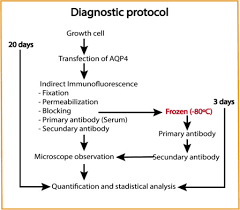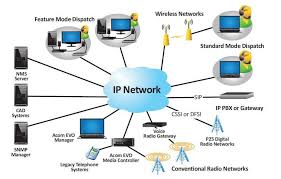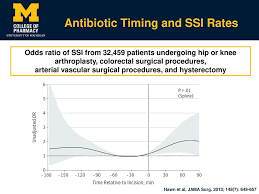
PROJMANICS LTD Project management
Order Instructions:
see attached file
SAMPLE ANSWER
Abstract
The identified project for PROJMANICS LTD is the development of new, innovative dishwashers. This project helps the business strategically by generating profit for PROJMANICS LTD. The leadership style during the project is democratic. The Project Manager for this project, Joey Brooks, will have the role of planning, implementing and closing the project. The project risks include scope creep/change in scope, insufficient funds, lack of skilled personnel, and some personnel leaving before completion of the project. The project is budgeted to cost £5 million and it would be carried out in a period of 1 year and 6 months.
Project management
Introduction
PROJMANICS LTD is involved in the manufacturing and retailing of innovative electronic products. The project that has been chosen that would generate profit for the organization is the development of a new and innovative product: dishwasher. This novel product is attractively designed, quiet and very energy efficient. This report provides a detailed Project Management plan that details the proposed idea.
Project organizational structure
|
Matrix organization structure: this organization structure draws employees from dissimilar functional disciplines for assignment to a team without having to remove them from their respective positions. In this organizational management, individuals who possess similar skills are pooled for work task (Perrin, 2009).
Project coordination
|
Green boxes represent personnel who are involved in project activities.
Belbin roles: Belbin pointed out that by understanding one’s role in a given team, one can be able to develop his/her strengths and manage his/her weakness as a team member and therefore improve how he or she contributes to the team (Schmidt, 2009). The Belbin model is used in this project in order to create teams that are more balanced. The team roles defined by Belbin are based upon observed behaviour as well as interpersonal styles.
| Role | Explanation | |
| Action-oriented roles | Shaper | Leader who is pushy shapes efforts of the team into a cohesive whole |
| Implementer | This individual translates ideas into concrete tasks and carries them out. The individual makes objectives clear, defines roles and tasks | |
| Completer-Finisher | Persistently makes the team achieve in time. Injects urgency and raises standards. The individual is compulsive about deadlines (Morris, 2013). | |
| People-oriented roles | Coordinator | Observes team processes, is detached. Absorbs every alternative and takes the decision of the team. Soothes conflict, encourages. |
| Team worker | Dampens arguments, promotes group harmony. Arrives at logical conclusions by means of analysis. The individual checks feasibility and practicality. | |
| Resource investigator | The individual communicates to and from the outside world. He knows a lot of people. He sells ideas to others (Morris, 2013). | |
| Thought-oriented roles | Plant | The individual is the source of original proposals and ideas. He looks for dissimilar approaches. Has an independent outlook and is concerned with major issues. |
| Monitor-evaluator | The individual is a dispassionate analyst. He or she arrives at logical conclusions through analysis. He or she checks feasibility and practicality. | |
| Specialist | Provides unique skills to the project. Has specialist knowledge necessary to implement the project effectively (Morris, 2013). | |
Democratic Leadership style: for this project, the style of leadership that would be adopted during the project life cycle is democratic leadership style. The project manager will invite ideas from the team members during the process of decision-making and then goes with the majority. This style of leadership is also referred to as participative or consultative (Perrin, 2009). Generally, project managers who do not guide or lead at all do not fall under democratic management leadership style. Due to the democracy atmosphere, every member of the project team is allowed input, although this may lengthen the project’s time. Nonetheless, an upside to the democratic management leadership style is employee morale.
Project charter
The project entails new product development for the company; developing dishwashers. Development of a new product is a crucial activity for an organization given that it provides the company with future business opportunity. This project is required since it would enable the company to diversify its product range, increase sales, and improve the company’s profitability. It helps the business strategically by generating profit for PROJMANICS LTD.
With regard to the expectations of the client, PROJMANICS LTD expects a product that is innovative and captivating that would be able to generate profit. The identified product, dishwasher, is innovative and captivating in that it would feature the following characteristics: very attractive design; automated and equipped with an LCD screen highlighting the product’s minimalist style; compact, portable or built-in; various colours, including black, blue, white, and red; made of stainless steel; and two independent drawers. Moreover, the product features spaces designed specifically for small plates and for pans and pot. The product also has an adjustable rack which could be modified to suit the needs of the user.
The project manager in this project, Joey Brooks, cultivates the people skills required for developing communication and trust amongst all the stakeholders of the project: the sponsors of the project, individuals who would utilize the results of the project – dishwasher buyers –, project team members, and individuals who command the required resources. The project manager will have the role of planning, implementing and closing the project; he is responsible for realizing the defined objectives and goals of the project (Stoshikj, Kryvinska & Strauss, 2014).
Critical success factors (CSF): also referred to as Key Results Areas, CSFs are the crucial areas of activity which have to be carried out well if the goals and objectives of the project are to be achieved. Critical success factors help everybody in the project team know precisely what is most significant and this helps people in carrying out their own work within the right context and so pull together toward the same overall goals/objectives (Morris, 2010). For this project, the critical success factors are as follows: (i) agree on goals of the project – it is important to ensure there is an agreement with the senior executives of PROJMANICS LTD, sponsors of the project, in addition to other stakeholders on the project’s goals and purpose. In essence, understandable measurable goals would help in defining the scope of the project. (ii) Develop clearly delineated plans with assigned accountabilities and responsibilities. Every deliverable has to be delineated together with the essential tasks for producing them and possible risks. Responsibilities have to be assigned to the tasks and deliverables with apt due dates and accountabilities (Perrin, 2009). In addition, the process of planning has to include risk management activities as well as communication requirements. It is worth mentioning that developing the schedule of the project is just a part of the planning process. (iii) Cultivate continuous effective communications: the necessary channels of communication required to inform the pertinent stakeholders of the project’s progress should be determined. Project sponsors and PROJMANICS LTD’s management might want regular status reports or they may want only the exceptions and the highlights. The client might also want statements of work as well as progress assessments. Furthermore, members of the project team would need task assignments and frequent updates. The types and frequency of communication for every channel has to be described and managed. This communication plan would have to be included in the project plan and communication should be done regularly (Perrin, 2009). If there is poor communication, the project may fail.
(iv) Manage the scope of the project effectively: the scope is defined during the goal setting and planning phases of the project. In general, it would be fine if the scope of the project does not change, but the scope may actually change. It would be very important for the project manager to constantly be watchful and aware for alterations to the project scope and manage those changes well. (v) Ensure there is support from the senior management: the management of PROJMANICS LTD has to agree that the project is significant and that it would add value to the company. If PROJMANICS LTD’s management sees no value of the project, then they are likely to be unwilling to support it. Without management support, funding resources and human resources for the project may be unavailable.
The high level project scope basing upon business and compliance requirement is as follows: The project’s purpose is to develop a new product for PROJMANICS LTD Company. The deliverable of the project would be new, innovative dishwashers. There is demand in the marketplace for innovative, novel and ground-breaking dishwashers that are attractively designed, quiet, and energy efficient. The project is therefore intended to meet a market demand. The high-level risks for the project include project not being delivered within the defined time frame, the funds budgeted for the project being inadequate, lack of enough skilled personnel to complete the project, and client changing the requirements. Success would be determined by the Sponsor as soon as the new, innovative product is developed and launched into the marketplace and meets the project objectives without discrepancies.
SMART Objectives: The objectives are Specific, Measurable, Agreed, Realistic and Time-bound. The objectives of this project are:
- To develop novel, innovative dishwasher products by December 2016 to generate 25% increase in PROJMANICS LTD Company’s revenue.
- To increase profit by 20% by December 2016 through selling 1,300 units of new dishwashers.
High level risks: high-level risks are identified and they would be utilized as the starting point for a more comprehensive analysis of the risks that face the project. The high-level risks for this project include the following: (i) resource risk – the funds set aside for the project, £5 million, may not be adequate to deliver the project. There may also be a scarcity of skills for the project (Carvalho & Rabechini, 2015). (ii) Strategic risk – the money set for the project may be used up in an inappropriate way and impede the ability of PROJMANICS LTD Company to deliver other corporate goals. (iii) Schedule risk – this level of risk may affect the duration of the project. For instance, there could be delays in obtaining the parts for developing the dishwashers. There could also be decision delay for instance decisions pertaining to the specifications and features of the product. Other high-level risks include client insisting on new requirements; client insisting on technical decisions which extend the schedule; important personnel leaving prior to the completion of the project; development of product that does not meet user requirements resulting in redesign and implementation; requirements are not well known at project commencement; and the total product features specified could be beyond what the new product development team are able to deliver within the available time (Carvalho & Rabechini, 2015).
Stakeholders specific to the project: stakeholders are understood as organizations or persons who participate in the project actively, or whose interests might be affected due to implementation of the project or completion of the project (Kerzner & Saladis, 2009). For this project, the stakeholders include PROJMANICS LTD Company, which is the client organization including its senior executives and management; the project team members involved in the execution of the project; and members of the public since they are the end-customers of the new, innovative dishwashers being developed in this project. Other stakeholders include the government since the new, innovative dishwashers must be developed in compliance with the government standards and requirements; suppliers as they would supply the parts used to develop the product; and business analyst.
Project milestones:
| Task | Date | |
| 1 | X1 Feasibility study | July 1, 2015 |
| 2 | X2 Concept testing | November 17, 2015 |
| 3 | X3 Detailed design | February 27, 2016 |
| 4 | X4 Develop and test prototype | May 22, 2016 |
| 4 | X5 Test product | July 15, 2016 |
| 5 | X6 Finalize design | September 28, 2016 |
| 6 | Y1 Set up production (Procure manufacturing capability and start up production) | November 12, 2016 |
| 7 | Y2 Product launch | December 3, 2016 |
The new product development project is expected to cost £5 million.
Issues and approach: the main issues that may be encountered during new product development are uncertainties. These would be managed by having a decision gate or check point/stage-gate – at the ending of major stages. It is notable that the stage-gate methodology fits very well with the typical techniques of project management for instance Gantt chart, wherein the gates would correspond to milestones. In general, the stage-gate approach applies simultaneous engineering and defines obligatory activities for different phases such as develop stage, test stage, and launch stage (Schmidt, 2009).
|
Project Charter template
Work breakdown structure (WBS)
The project has a number of phases such as design of the dishwasher product, testing of the product, production, as well as arranging for marketing of the product. This listing formed the starting point of the high-level WBS.
Table 1: work breakdown structure for dishwasher development
| Life cycle of new product development (dishwashers) | |
| X1 Idea generation | Identify needs and requirements of the customer |
| Assess quality of the existing products | |
| Describe the objectives of the new product for instance cost, quality, aesthetic, functional | |
| X2 Concept design | Creative generation of idea |
| Refining the concepts | |
| Retrieving previous design intent | |
| X3 Feasibility study | Ensure strategic feasibility such as SWOT |
| Ensure there is technology capability | |
| Ensure resources are available | |
| Ensure schedule feasibility | |
| Ensure fiscal feasibility | |
| Ensure there is market | |
| Decide whether to proceed or not to proceed | |
| X4 Detailed design | Define the specifications |
| Design the main features | |
| Make drawings | |
| Make prototype | |
| X5 Test product | Test for user satisfaction |
| Test main characteristic such as engineering | |
| X6 Finalize design | Evaluate the product design |
| Seek approval from the board | |
| Rework product design | |
| Freeze the design | |
| Y1 Set up production | Acquire the necessary manufacturing capability |
| Design the tooling | |
| Make the tools | |
| Modify the building | |
| Get the equipment | |
| Find the manufacturing personnel capability | |
| Start up production of the dishwashers | |
| Obtain first parts from production | |
| Test the parts | |
| Confirm quality tolerances | |
| Manufacture in volume | |
| Y2 Arrange marketing | Identify the main benefits of the product |
| Identify the likely users | |
| Plan the strategy for marketing | |
| Produce advertisements and catalogues | |
| Produce rainforest campaign | |
| Y3 Arrange distribution of the new products | Create sales chain |
| Get local representatives | |
| Develop business procedures for ordering, transportation, accounting, as well as repair | |
| Establish technical support capability | |
| Create user manual | |
| Create service manual | |
| Make a decision on conditions of warranty | |
| Get personnel capability | |
| Make lifetime spares requirement | |
| Decommission production | |
| Archive documentation | |
| Closure of project | |
Project plan and responsibility matrix
Figure 1: Gantt chart showing project plan
| Task Name | Jul 2015 | Aug
‘15 |
Oct
‘15 |
Nov
17th ‘15 |
Nov
19th ‘15 |
Dec
‘15 |
Jan
2016 |
Feb
27th ‘16 |
Mar
‘16 |
Apr
‘16 |
May
22nd 16 |
Jun
16 |
Jul
15th 16 |
Aug
‘16 |
Sep
28th ‘16 |
Oct
‘16 |
Nov
12th ‘16 |
Dec
3rd ‘16 |
| Idea Generation | ||||||||||||||||||
| Concept design | ||||||||||||||||||
| Feasibility study | ||||||||||||||||||
| Detailed design | ||||||||||||||||||
| Test product | ||||||||||||||||||
| Finalize design | ||||||||||||||||||
| Set up production | ||||||||||||||||||
| Launch (arrange marketing and distribution of the new products) |
Task responsibility matrix
The RACI model is used to develop the task responsibility matrix. RACI means Responsible, Accountable, Consulted, and Informed (Haughey, 2015). Responsible: this individual is the one who carries out the work in order to accomplish the task. In essence, they are responsible for getting the decision made or work performed. Generally, this is one individual, for instance, a business analyst. He/she owns the work. Accountable: this individual is accountable for thorough and proper completion of the task. Haughey (2015) reported that this has to be one individual and is usually the Project Sponsor or the Project Executive. This is basically the role that responsible is accountable to and endorses their tasks or work. Consulted: this is the individual that provides information for the project and with whom there is 2-way communication. The Consulted are often several persons, in most cases they are subject matter experts (Haughey, 2015). He or she delivers the information needed to carry out the work. Informed: these are the individuals that are kept informed regarding progress and with whom there is 1-way communication. The outcome of the tasks affects them so they must be kept up-to-date (Haughey, 2015).
|
Who
Activity |
Project Sponsor | Project Manager | Business Analyst | Project team member, Nancy Frome | Project team member, Phil Davies | Stakeholder | |
| X1 Idea generation | Identify needs of the customer | A | R | I | I | I | I |
| Evaluate the quality of the existing products | A | R | R | R | I | ||
| Describe the objectives of the new product for instance cost, quality, aesthetic, functional | A | E | C | I | I | I | |
| X2 Concept design | Creative generation of idea | I | A | I | R | R | I |
| Refine the concepts | A | R | C | R | R | I | |
| Retrieve previous design intent | I | A | R | R | I | ||
| X3 Feasibility study | Check strategic feasibility such as SWOT | I | A | I | R | R | I |
| Check technology capability | I | A | R | R | I | ||
| Check for resources available | I | A | R | R | I | ||
| Check schedule feasibility | 1 | A | R | R | I | ||
| Check fiscal feasibility | I | A | I | R | R | I | |
| Check market | C | I | |||||
| Make decision to proceed or not to proceed | C | A | C | R | R | I | |
| X4 Detailed design | Define the specifications | C | A | R | R | I | |
| Design the main characteristics | C | A | C | R | R | I | |
| Make drawings | C | A | C | R | R | I | |
| Make prototype | C | A | C | R | R | I | |
| X5 Test product | Test for user satisfaction | C | A | R | R | I | |
| Test main characteristic such as engineering | C | A | R | R | I | ||
| X6 Finalize design | Review the product design | I | A | R | R | R | I |
| Seek approval from the board | A | R | R | I | |||
| Revise product design | I | A | I | R | R | I | |
| Freeze the design | C | A | C | R | R | I | |
| Y1 Set up production | Acquire the necessary manufacturing capability | I | R | I | |||
| Design the tooling | C | A | C | R | R | I | |
| Make the tools | I | R | C | I | |||
| Modify the building | C | A | R | R | I | ||
| Get the equipment | C | A | I | R | R | I | |
| Find the manufacturing personnel capability | I | A | C | I | |||
| Start up production of the dishwashers | C | A | C | R | R | I | |
| Obtain first parts from production | I | A | C | R | R | I | |
| Test the parts | I | A | C | R | R | I | |
| Confirm quality tolerances | I | A | R | I | |||
| Manufacture in volume | C | A | C | R | R | I | |
| Product Launch | C | A | I | R | R | I | |
Project budget breakdown
| Project Budget Breakdown | |||
| Item | Description | Amount | |
| 1 | Research costs | Costs incurred in conducting research to determine the appropriate design and product specifications for the new product | £327,860 |
| 2 | Labour cost | Payment of staff salaries. Staff members include the project team members. There would be 10 participants in the project each would be paid £100,000 for the 18 months of the project | £1,000,000 |
| 3 | Equipment cost | Equipment for making the prototype, testing the prototype, and making the final product | £945,000 |
| 4 | Material costs | Materials for manufacturing the new product – dishwashers. Some materials are imported from China and Europe since they are not available locally in the United Arab Emirates | £1,350,000 |
| 5 | Facility costs | Costs – including utility costs – of using the facility to manufacture new, innovative dishwashers | £527,000 |
| 6 | Overhead costs | These include office overheads and other costs that cannot be directly accountable to a cost object | £120,000 |
| 7 | Allowances for contingencies | The project scope may change and this would mean an increase in costs | £400,000 |
| 8 | Project consultant | Provide vital input as an expert | £180,000 |
| 9 | Other costs | Other costs that are specific to the project | £150,140 |
| Total | £5,000,000 | ||
To monitor and control the specified costs, the following methods would be used: frequently forecasting the project budget; forecasting usage of resources regularly; keeping the project team informed; and managing scope carefully considering that scope creep is a major cause of project overruns (Morris, 2009).
Project risk and analysis management/project health and safety policy
| Risk item | Description | Action plan to minimize occurrence | |
| 1 | Shortage of expertise | There could be a lack enough skilled personnel to implement the project | Hire enough individuals who are skilled enough |
| 2 | Customer relations | Managing the demand of the client, PROJMANICS LTD | Properly understand customer needs and requirements |
| 3 | Insufficient funds | The budget may not be enough to complete the project | Continually forecast the budget and forecast resource usage regularly |
| 4 | Change of requirements | The client may change the requirements of the project during project execution | Prepare for and anticipate scope creep |
| 5 | Final product not satisfy customer needs | The developed product my fail to meet user requirements resulting in redesign | Properly understand customer needs and requirements |
| 6 | Project not finished on time | Parts may delay | Procure all the necessary parts and components on time prior to project implementation |
Risk Map
| Impact/severity | High | Insufficient funds | Shortge of skilled expertise | |
| Moderate | Change of requirements | Finished product not satisfy customer requirements | Project not finished on time | |
| Low | Customer relations | |||
| Low | Moderate | High | ||
| Probability | ||||
Project Health and Safety problems and solutions
The common problems are illustrated in the table below:
| Problem | Solution | |
| 1 | Serious incidents that involve unguarded machines | Machine guarding throughout the premises |
| 2 | Poorly ventilated premises | Ensure the facility has adequate ventilation |
| 3 | Workers working without protective gear or appropriate attire | Protective gear and appropriate clothing availed to all personnel |
| 4 | Poorly lit workplaces | Ensure adequate lighting in the working areas |
| 5 | Workers overworked | Ensure there are enough workers and no worker works beyond the set time limits |
Project Health and Safety Policy Statement: the highest safety and health standards would be maintained throughout the premises for a safe working environment for every employee working with PROJMANICS LTD.
References
Carvalho, M. D., & Rabechini, J, R. (2015). Impact of risk management on project performance: the importance of soft skills. International Journal Of Production Research, 53(2), 321-340. doi:10.1080/00207543.2014.919423
Haughey, D. (2015). RACI Matrix. Retrieved from http://www.projectsmart.co.uk/raci-matrix.php
Kerzner, H., & Saladis, F. P. (2009). What Functional Managers Need to Know About Project Management. Hoboken, N.J.: Wiley.
Morris, P. (2013). Reconstructing Project Management Reprised: A Knowledge Perspective. Project Management Journal, 44(5), 6-23. doi:10.1002/pmj.21369
Perrin, R. (2009). Real World Project Management: Beyond Conventional Wisdom, Best Practices, and Project Methodologies. Hoboken, N.J.: Wiley.
Schmidt, T. (2009). Strategic Project Management Made Simple : Practical Tools for Leaders and Teams. Hoboken, N.J.: Wiley.
Stoshikj, M., Kryvinska, N., & Strauss, C. (2014). Efficient Managing of Complex Programs with Project Management Services. Global Journal Of Flexible Systems Management, 15(1), 25-38. doi:10.1007/s40171-013-0051-8
We can write this or a similar paper for you! Simply fill the order form!












